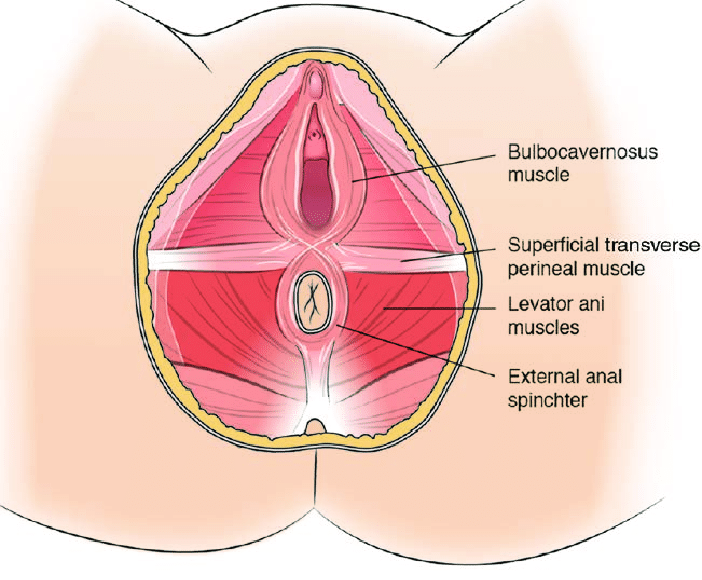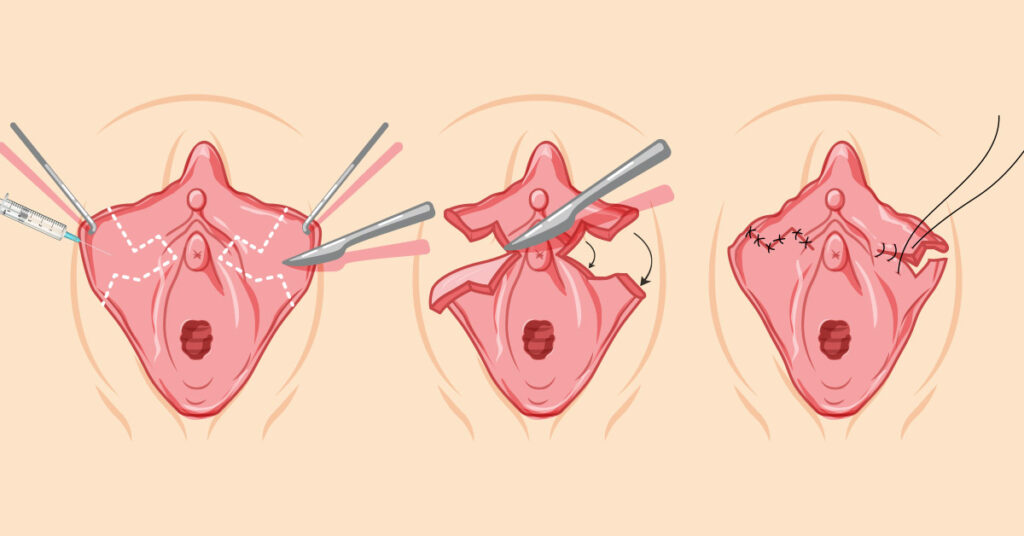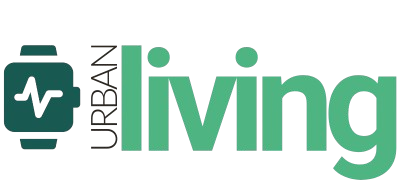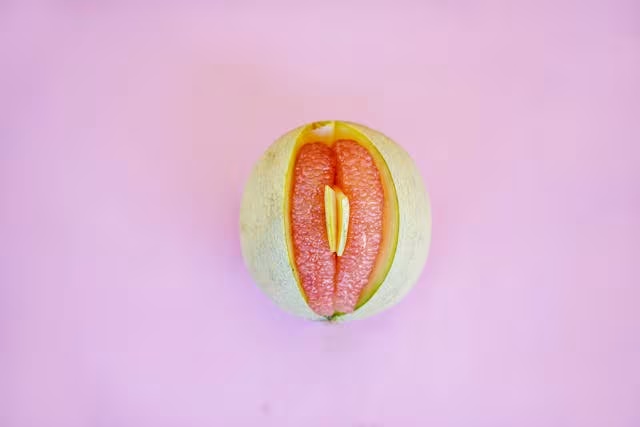
Vaginal rejuvenation has become increasingly recognized as an effective solution for women experiencing changes in vaginal tone, sensitivity, and function.
Whether these changes occur due to childbirth, aging, hormonal fluctuations, or other factors, many women in Singapore are seeking treatments to address these intimate concerns and restore their confidence and comfort.
This comprehensive guide explores the various aspects of vaginal rejuvenation, including what it is, who can benefit from it, the different procedures available in Singapore, and what to expect from treatment.
Understanding Vaginal Laxity
What Is Vaginal Laxity?
Vaginal laxity refers to the loosening or decreased elasticity of vaginal tissues.
This condition develops when the vaginal walls and supporting connective tissues become stretched and weakened, resulting in a feeling of “looseness” in the vaginal area.
While many women may feel uncomfortable discussing this issue, it’s a common concern that can significantly impact quality of life, including physical comfort, sexual satisfaction, and emotional well-being.
You might like: The Ultimate Guide to Breast Augmentation in Singapore
How Vaginal Laxity Develops

Vaginal laxity typically progresses through several stages influenced by various life events:
- Pregnancy and Childbirth
During vaginal delivery, the tissues experience significant stretching to accommodate the baby’s passage. This stretching can lead to overstretched muscles and tendons in the vaginal area, particularly after multiple births or delivering larger babies. - Aging and Hormonal Changes
As women age, natural collagen production decreases. Hormonal shifts, especially during perimenopause and menopause, cause vaginal tissues to become thinner and less elastic. Estrogen decline plays a significant role in these changes. - Pelvic Floor Muscle Weakness
The pelvic floor muscles provide support to the vaginal structure. When these muscles weaken due to factors like chronic strain (from heavy lifting, chronic coughing, constipation), weight fluctuations, or lack of targeted exercise, it can contribute to the sensation of vaginal looseness.
You might be interested: Menopause Treatment Singapore
Symptoms Associated with Vaginal Laxity
Women experiencing vaginal laxity may notice several symptoms that affect their daily life and intimate relationships:
- Feeling of Looseness: A noticeable lack of tightness in the vaginal area, often noticed during physical activities or sexual intercourse
- Reduced Vaginal Sensitivity: Decreased pleasurable sensations during intimacy, affecting sexual satisfaction
- Vaginal Dryness: Insufficient natural lubrication leading to discomfort during intercourse
- Difficulty Retaining Tampons: Trouble keeping tampons in place due to decreased muscle tone
- Stress Urinary Incontinence: Involuntary urine leakage when coughing, sneezing, laughing, or during physical activities
- Pelvic Organ Prolapse: A sensation of heaviness or bulging in the vaginal area due to weakened support structures
Related article: Understanding Low Libido in Women: Causes, Treatment and Impact
Types of Vaginal Rejuvenation Procedures in Singapore
Vaginal rejuvenation encompasses a range of procedures designed to address various concerns related to vaginal laxity, appearance, and function.
In Singapore, both surgical and non-surgical options are available.
Non-Surgical Vaginal Rejuvenation Options
Non-surgical treatments have gained popularity due to their minimal downtime, lower risk profiles, and natural-looking results.
You might be interested: Guide to Finding a Good Aesthetic Doctor in Singapore
These options include:
Laser Vaginal Rejuvenation
This treatment utilizes specialized lasers (such as the Fotona Smooth™ Er:YAG laser) to gently heat vaginal tissues, stimulating collagen production and tissue regeneration. The procedure:
- Is typically performed as an outpatient procedure
- Takes approximately 20-30 minutes per session
- Requires no anesthesia
- Allows immediate return to normal activities (with the exception of sexual intercourse for 3-7 days)
- May require 2-4 sessions for optimal results
Laser treatment is particularly effective for mild to moderate vaginal laxity, vaginal dryness, and mild stress urinary incontinence.
Related article: Q-Switched Laser Treatment in Singapore
Radiofrequency Therapy
Radiofrequency treatments use controlled thermal energy to heat the deeper layers of vaginal tissue, promoting collagen formation and tissue tightening.
This therapy:
- Gently heats vaginal tissues to stimulate collagen production
- Improves elasticity and tone
- Is comfortable and discreet
- Requires multiple sessions for optimal results
Ultrasound Therapy
This approach uses focused ultrasound waves to support tissue regeneration and enhance structural support in vaginal tissues.
The sound waves trigger the body’s natural healing response, leading to improved tissue quality.
This might help: Best Aesthetic Clinic in JB for Singaporeans
Electromagnetic Pelvic Floor Therapy
This non-invasive treatment involves the use of electromagnetic energy to stimulate and strengthen the pelvic floor muscles. During treatment:
- A specialized device delivers electromagnetic pulses to activate pelvic floor muscles
- These contractions strengthen the muscles that support vaginal tone
- The treatment can help address related concerns like urinary incontinence
- No active participation is required from the patient during the procedure
You might be interested: List of Aesthetic Treatments and Costs in Singapore
Surgical Vaginal Rejuvenation Options
For women seeking more significant results or those with more severe laxity, surgical options may be recommended:
Vaginoplasty
Vaginoplasty is a surgical procedure that tightens the vaginal canal and surrounding muscles. During this procedure:
- A strip of vaginal mucosa is removed
- The underlying muscles are tightened through plication (folding and suturing)
- The procedure can be performed on both sides of the vaginal wall for enhanced tightening if needed
- It typically takes 1-1.5 hours and is usually done under moderate sedation as a day surgery
- Results are more dramatic and longer-lasting than non-surgical options
Labiaplasty

While not directly addressing vaginal laxity, labiaplasty is often performed alongside vaginal rejuvenation procedures to address aesthetic concerns of the external genitalia. This procedure may include:
- Reduction or reshaping of the labia minora (inner vaginal lips)
- Fat grafting to the labia majora (outer vaginal lips) to restore volume lost through aging
- Reduction of the clitoral hood to enhance sensation (requires careful technique to avoid nerve damage)
Related article: Non-Invasive Body Contouring Treatments in Singapore
Benefits of Vaginal Rejuvenation
Women who undergo vaginal rejuvenation treatments often report multiple benefits that improve their quality of life:
Physical Benefits
- Enhanced Vaginal Tightness: Improved vaginal firmness and elasticity leading to increased physical comfort and better sexual function
- Improved Vaginal Health: Increased collagen production revitalizes vaginal tissues, alleviating dryness and discomfort
- Reduced Urinary Incontinence: Strengthening of vaginal and pelvic tissues can significantly decrease episodes of stress urinary incontinence
- Relief from Symptoms of Vaginal Atrophy: Particularly beneficial for menopausal women experiencing thinning tissues and dryness
Psychological and Emotional Benefits
- Boosted Confidence: Addressing intimate concerns often leads to improved self-esteem and body image
- Enhanced Intimate Relationships: Improved physical comfort and sensation can lead to better sexual satisfaction and communication with partners
- Improved Quality of Life: Reduction in symptoms like incontinence and discomfort can significantly enhance daily activities and overall well-being
What to Expect: The Treatment Experience
Consultation Process
Before undergoing any vaginal rejuvenation procedure in Singapore, patients should expect:
- A thorough consultation with a qualified medical professional
- Detailed discussion of symptoms and concerns
- Physical examination to assess the degree of laxity and identify the most appropriate treatment
- Clear explanation of available options, expected outcomes, and potential risks
- Opportunity to ask questions and address concerns
During Treatment
Non-Surgical Procedures
For non-surgical treatments like laser therapy or radiofrequency:
- Procedures typically take 20-30 minutes
- Most patients report minimal to no discomfort
- No anesthesia is required
- The treatment is performed in a private clinic setting
Surgical Procedures
For surgical interventions like vaginoplasty or labiaplasty:
- Procedures are usually performed under moderate sedation or general anesthesia
- Surgery typically takes 1-2 hours
- The procedure is performed in a surgical center or hospital setting
- Patients can usually return home the same day
Recovery and Aftercare
Non-Surgical Recovery
- Immediate return to normal activities (with exception of sexual activity)
- Abstaining from sexual intercourse for 3-7 days is recommended
- Mild discomfort or discharge may occur but typically resolves quickly
- Multiple sessions spaced several weeks apart may be required
Surgical Recovery
- Recovery involves the use of sanitary pads for about a week due to blood-stained discharge
- Application of antibiotic ointment twice daily for one week until wound healing
- Abstention from sexual intercourse for approximately 2 weeks
- Avoidance of strenuous physical activity for 1 week
- For vaginoplasty, lubrication may be required during initial sexual activity as the area may feel tight until scar tissue fully relaxes
Common Misconceptions About Vaginal Rejuvenation
Several misconceptions exist regarding vaginal rejuvenation procedures:
- “It’s purely cosmetic”: While aesthetic improvement may be one aspect, vaginal rejuvenation primarily addresses functional concerns like laxity, urinary incontinence, and sexual discomfort.
- “It’s only for older women”: Women of all ages may experience vaginal changes due to childbirth, hormonal fluctuations, or genetic factors. Younger women, especially after childbirth, commonly seek these treatments.
- “Results are always temporary”: While non-surgical treatments may require maintenance sessions, surgical procedures can provide long-lasting results. Additionally, lifestyle changes and pelvic floor exercises can help maintain results.
- “Recovery is painful and lengthy”: Modern techniques, especially non-surgical options, involve minimal discomfort and downtime. Even surgical procedures have become less invasive with faster recovery times.
Why Women in Singapore Choose Vaginal Rejuvenation
Physical Reasons
- Post-pregnancy recovery and addressing changes that occurred during childbirth
- Managing symptoms of menopause and hormonal changes
- Addressing urinary incontinence issues that impact daily life
- Improving sexual function and satisfaction
- Alleviating physical discomfort during everyday activities
Psychological Reasons
- Enhancing self-confidence and body image
- Improving intimate relationships
- Addressing emotional distress related to physical symptoms
- Regaining a sense of control over bodily changes
Choosing the Right Procedure and Provider
When considering vaginal rejuvenation in Singapore, patients should:
- Research qualified providers with specific expertise in female genital procedures
- Verify the credentials and experience of the practitioner
- Review before and after results if available
- Understand the technology being used and its safety profile
- Consider the number of sessions required and total investment
- Assess recovery time based on personal circumstances
Frequently Asked Questions
How do laser vaginal rejuvenation treatments work?
Laser vaginal rejuvenation uses photo-thermal energy to stimulate collagen remodeling and production in vaginal tissues.
When the laser energy is applied to the vaginal walls, it creates controlled heating that causes immediate contraction of collagen fibers while simultaneously triggering new collagen formation (neocollagenesis).
This dual action helps tighten existing tissue and improve tissue quality over time as new collagen develops.
The procedure enhances vaginal elasticity, increases natural lubrication, and improves support for concerns like mild urinary incontinence and vaginal laxity.
Is vaginal rejuvenation treatment painful?
Most non-surgical vaginal rejuvenation treatments involve minimal to no pain. Patients typically describe the sensation as a mild warming or tingling feeling.
No anesthesia or pain medication is required for non-surgical procedures like laser therapy, radiofrequency, or electromagnetic treatments.
For surgical procedures such as vaginoplasty or labiaplasty, the procedure is performed under appropriate anesthesia to ensure comfort, and post-operative discomfort can typically be managed with prescribed pain medication.
Many patients are surprised by how comfortable the procedures are, especially the non-surgical options.
How many treatment sessions are required?
The number of treatment sessions varies depending on the specific procedure and individual needs.
For non-surgical treatments like laser therapy or radiofrequency, most patients require 2-4 sessions spaced several weeks apart for optimal results.
Maintenance sessions may be recommended annually to sustain benefits.
Surgical procedures like vaginoplasty or labiaplasty typically involve a single session, with long-lasting results that may not require further intervention.
Your healthcare provider will create a personalized treatment plan based on your specific concerns, the severity of symptoms, and your desired outcomes.
What is the recovery time after vaginal rejuvenation?
Recovery time varies significantly based on the type of procedure. For non-surgical treatments:
- No downtime is required
- Normal activities can be resumed immediately
- Sexual intercourse should be avoided for 3-7 days
For surgical procedures:
- Recovery takes approximately 1-2 weeks
- Mild discomfort and discharge may occur for several days
- Sexual intercourse should be avoided for about 2 weeks
- Full recovery and optimal results may take 6-8 weeks
Are the results of vaginal rejuvenation permanent?
Results vary based on the procedure type and individual factors.
Non-surgical treatments typically provide improvement that lasts 12-18 months, after which maintenance sessions may be needed.
The body continues to age naturally, and factors like subsequent pregnancies or significant weight fluctuations can affect long-term results.
Surgical procedures generally provide longer-lasting results, though natural aging will continue to affect the tissues over time.
Maintaining results can be supported through healthy lifestyle choices, pelvic floor exercises, and appropriate maintenance treatments as recommended by your healthcare provider.
Who is an ideal candidate for vaginal rejuvenation?
Ideal candidates for vaginal rejuvenation include:
- Women experiencing vaginal laxity after childbirth
- Those with mild to moderate stress urinary incontinence
- Women experiencing vaginal dryness or discomfort, particularly due to menopause
- Individuals with decreased sexual satisfaction related to reduced vaginal sensation
- Those with mild pelvic organ prolapse or feeling of heaviness
Candidates should be in good overall health, have realistic expectations about results, and not be pregnant or planning pregnancy in the near future.
A thorough consultation with a qualified healthcare provider is essential to determine if you’re an appropriate candidate for specific procedures.
What is the cost of vaginal rejuvenation in Singapore?
The cost of vaginal rejuvenation in Singapore varies widely based on the type of procedure, the technology used, the provider’s expertise, and the number of sessions required. As a general guideline:
- Non-surgical laser treatments may start from approximately $1,000-$3,000 per session
- Radiofrequency or ultrasound treatments range from $800-$2,500 per session
- Surgical procedures like vaginoplasty typically range from $8,000-$15,000
- Combined procedures (such as vaginoplasty with labiaplasty) will have higher costs
Many providers offer trial sessions at reduced rates for first-time patients, with some clinics advertising introductory prices starting around $998 for initial treatments. It’s advisable to consult with several qualified providers to compare costs and treatment plans specific to your needs.
Can vaginal rejuvenation help with urinary incontinence?
Yes, certain vaginal rejuvenation procedures can significantly improve symptoms of stress urinary incontinence.
Treatments that strengthen and tighten the vaginal tissues and surrounding pelvic floor muscles help provide better support to the urethra and bladder, reducing involuntary leakage during activities like coughing, sneezing, laughing, or exercise.
Non-surgical options like laser therapy have been FDA-approved specifically for treating mild to moderate stress urinary incontinence.
For optimal results, your healthcare provider might recommend combining vaginal rejuvenation with pelvic floor physical therapy or exercises.
The degree of improvement depends on the severity of incontinence and individual factors.
Is there any special preparation required before treatment?
For most vaginal rejuvenation procedures, minimal preparation is required. However, your provider may recommend:
- Avoiding sexual intercourse for 2-3 days before treatment
- Stopping certain medications or supplements that might increase bleeding (with your primary doctor’s approval)
- Shaving or trimming the treatment area for certain procedures
- Completing any requested lab work or medical clearance
- Arranging for transportation home after surgical procedures
Always follow the specific pre-treatment instructions provided by your healthcare provider to ensure optimal results and minimize any potential complications.
How soon after childbirth can I undergo vaginal rejuvenation?
Most practitioners recommend waiting at least 6 months after vaginal childbirth before undergoing any vaginal rejuvenation procedure.
This waiting period allows your body to heal naturally and for hormones to stabilize.
Some providers may suggest waiting until you’ve completed your family, as subsequent pregnancies and childbirths could affect the results of rejuvenation procedures, particularly surgical ones.
If you’re breastfeeding, you might need to wait until you’ve finished, as hormonal fluctuations during lactation can influence tissue quality and treatment effectiveness.
Always consult with both your obstetrician and the rejuvenation specialist to determine the optimal timing for your specific situation.
Conclusion
Vaginal rejuvenation offers women in Singapore effective solutions for addressing intimate concerns related to vaginal laxity, dryness, reduced sensation, and urinary incontinence.
With both surgical and non-surgical options available, treatments can be tailored to individual needs, concerns, and desired outcomes.
As with any medical procedure, thorough research and consultation with qualified healthcare professionals are essential to understand the options, potential results, and any risks involved.
By addressing these intimate concerns, many women report significant improvements in physical comfort, sexual satisfaction, and overall quality of life.
The growing availability and acceptance of these procedures reflect an important shift toward prioritizing women’s intimate health and well-being as integral aspects of overall health care.

